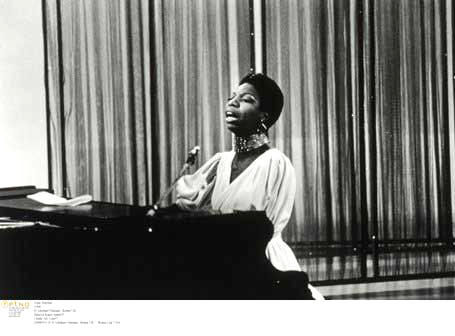The words are powerful in their simplicity, filled with the ache of a bitter history:
“I wish I knew how it would feel to be free.
“I wish I could break all the chains holding me.
“I wish I could say all the things that I should say.
“Say ’em loud, say ’em clear, for the whole wide world to hear.”
These are the lyrics to “I Wish I Knew How It Would Feel To Be Free,” written in 1954 by jazz pianist and composer Billy Taylor, made famous in the 1960’s by legendary soul singer and Civil Rights icon Nina Simone, who added it to her regular repertoire. At the height of the Civil Rights movement, the song became a powerful anthem — a favorite of the Rev. Martin Luther King, Jr. It was played in nightclubs, at festivals, before audiences packed with passionate activists.
And on Sunday, it was played as part of a Ford commercial that aired during the Super Bowl.
For those who know the song’s storied history, it was a rather jarring juxtaposition: “I wish I knew how it would feel to be free,” Simone sang in her rich alto, over a series of images depicting familiar inconveniences — the sort that might afflict those of a certain privilege. There was a skier dangling on a stalled lift. A man stranded on his roof after his ladder tipped over. A dismayed woman sitting in a traffic jam, her frown bathed in the reddish glow of taillights.
“No one likes being stuck,” the commercial’s narrator intoned. “That’s why Ford is developing new ways to help you move through life — faster, easier, better.”
On Twitter, where the masses rushed to share instant reactions to all things Super Bowl-related, some people applauded the commercial. A few said they were happy to hear Simone’s song played before such a massive audience. But others swiftly objected the use of the song — about the long and painful struggle for racial justice — to sell cars.
Others imagined that Simone herself would not be happy if she knew her version of the song was being used as a marketing ploy, accompanied by footage of everyday frustrations: “Rolling in her grave,” several tweeted. (Ford did not immediately respond to a request for comment.)
Taylor, the song’s composer, certainly wrote the song with a powerful and pointed message in mind. His daughter, Kim Taylor-Thompson, told the Financial Times that she’d encouraged him to write the song after he came home from school humming a spiritual.
“A lot of his travel as a musician required that he stay in hotels that were only for African-Americans, and he couldn’t go to the white hotels, even though he might have been performing in some of those places,” she told the BBC in 2014. “So he had genuine experience with what it meant to be a person of color in this country.”
Taylor’s song has been covered by many musicians — but Simone’s version is arguably the most iconic. Her rendition was beloved by King, and there was a great mutual admiration between the two Civil Rights heroes, guitarist Alvin Schackman recalled in an interview with the BBC.
Schackman, who traveled and performed with Simone, remembered playing the song at a pivotal moment in the Civil Rights movement, as King prepared to lead nonviolent protesters on a massive march from Selma, Alabama, to the state capitol of Montgomery.
“We went to the march at Selma, so we landed in Montgomery, and so Nina and I did perform that night,” Schackman told the BBC. When they played “I Wish I Knew How It Would Feel To Be Free,” he said, “it was an uproar. They loved it. Everyone was screaming.”
That was two years before Simone released a recording of the song on her 1967 record “Silk and Soul,” and three years before a television interviewer asked Simone what freedom meant to her — the idea at the heart of Taylor’s song, and so much of Simone’s own protest music.
“I’ll tell you what freedom is to me: no fear,” she said. “I mean really — no fear.”






